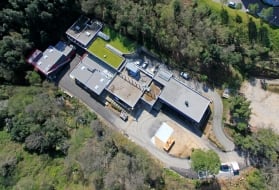quality and reliability objectives
Reading time:The quality objective depends on local or national legislation and will frequently vary depending on the discharge location. In Europe, the directive of the 21st May 1991 (see treatment purpose quality objectives) was drafted by defining three types of discharge zones corresponding to three different levels of treatment:
- normal zones;
- sensitive zones;
- less sensitive zones.
The enactment of this directive under French law resulted in the publication of an order of the 22nd December 1994, modified on 2 May 2006 and 22 June 2007, revised by the Order of 21 July 2015 on muncipal wastewater treatment establishing the discharge levels that had to be met for normal zones (treatment of suspended solids and of carbonaceous matter, COD and BOD) and sensitive zones (nitrogen or phosphorous based contamination).
Additionally, this directive and its French order strengthen compliance with these objectives by subjecting them to a minimum plant reliability level in operating mode: more than x% of the results achieved must be in compliance: x and the sampling frequency will be determined by plant size.
Consequently, in order to achieve this compliance, the plant designs proposed include the following as part of the design:
- over-design to allow for loading variations;
- multiple treatment trainsto allow for system maintenance that is essential to plant operation;
- installed back-up systemsto ensure uninterrupted operation of the processes used;
- electricalautomated systems and redundancieswhich can include, as required, separate power supplies, with back-up systems if necessary, by groups…(seespecifics water treatment) to reinforce the preceding provisions;
- Advanced operating systems(seechanges to the carbonate balance) including more and more advanced control systems, are based on new increasingly reliable sensors, which allow real-time adjustment of treatment processes to fluctuations from the sewage network. In addition to the traditional supervision systems such as SCADA (Supervisory Control and Data Acquisition) and maintenance systems (CMMS : Computerised Maintenance Management System, etc.) the designer includes advanced solutions allowing the fine-tuning of PID control loops, advanced data processing (data analysis, dashboard) and advanced process algorithms and control (SMART process control…).
Even more stringent targets could be set in coastal areas home to oyster and shellfish farms and where there are public swimming beaches (in these cases, disinfection is essential for abating contaminating bacteriological micro-organisms).
The plant then has to be supplemented with the incorporation of tertiary systems for reducing suspended solids and for enhancing disinfection capability: UV, chlorine and derivatives, ozone (see special case of municipal WW disinfection).
Similarly, when water is re-used as is the case for industrial process water, as well as water used for sprinkling ground and green spaces, or for drinking water (indirect see wastewater re-use) designed to reduce water consumption from the natural environment, complete tertiary systems have to be used, followed by extremely reliable disinfection units.
Lastly, the emergence of new standards such as the Federal Directive published in Switzerland in April 2015 on micropollutants involves taking into account new substances to be removed. The habits of developed countries have encouraged medication to be widely taken and have revealed the presence of mainly inorganic substances which may have significant environmental impacts. The identification of predominant substances at a local level will enable new and specifically adapted treatment processes to be implemented.
Note: in France a letter from the Government dated 29 September 2010 on micropollutants, set the objective of deploying a 3-step approach: the implementation of an initial measurement campaign based on 4 comprehensive annual assessments (2011), regular monitoring (2012), the measurement of parameters found to be significant over a 3-year period subsequent to the regular monitoring phase (2012). Following this work, a list of 103 micropollutant, classified in order of priority based on their hazard potential, was established.
Bookmark tool
Click on the bookmark tool, highlight the last read paragraph to continue your reading later













